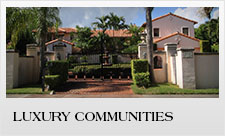Once upon a distant time, the village center of old Coconut Grove was so anything-goes mellow that a blind man — folk-rock star Jose Feliciano, to be specific — could pedal a bicycle a short way down the street without fear of running into anything.
That was long ago, during a near-mythical age when hippies, artists, writers and folk singers mixed in the streets, the cafes and the jungly neighborhood cottages with the descendants of the Grove’s pioneer gentry, and you could bump into Tennessee Williams at the Coconut Grove Pharmacy’s lunch counter, and David Crosby and Joni Mitchell shacked up, pre-fame, on a sailboat at Dinner Key.
“It was,” recalls longtime Groveite and Grove Arts Fest co-founder Charlie Cinnamon, “mind-blowingly beautiful.”
What has happened since is by now an oft-told tale: The old Grove, the oldest place in Miami and for many years the only place worth going out of your way for, was buried by an onslaught of big money, by malls, chains and McMansions, and then, for a decade at least, after the big money went to South Beach, by a steady decline into a general drabness — some bright spots aside — of shuttered storefronts, third-shelf boutiques, bad-news bars and tourist-trap eateries.
A new generation of Grove devotees, some born and bred in the old village confines, is re-occupying significant chunks of its commercial downtown and waterfront, with an eye to a revitalization they say will be more in keeping with the genteel Bohemia of the Grove’s first 90 years than the glitz and chintz of the last 35.But now, years after the resurgence of South Beach, Brickell and even downtown South Miami left it in the dust, the authentic old Grove spirit, assumed dead by many, is stirring once more.
Their plans range widely in scale and ambition, from ultra-luxury condo towers set in lush gardens on Bayshore Drive to some fresh paint, striking new awnings and a stellar roster of new indie tenants, including Panther Coffee and Harry’s Pizzeria, on a prominent corner of Main Highway.
But the projects have some common elements to restore the village’s faded identity, they say: local owners and local operators, focused not on tourists or outsiders but on local residents, all with a creative bent and a pedestrian-oriented, Grove-centric feel. Even the luxury towers are being marketed principally to Miamians, not foreign investors, they say.
“It’s been a long time coming,” said Raymond Fort, whose family, the driving force behind Grove-based architectural giant Arquitectonica, has bought and is revamping an entire corner in the village center’s main intersection. “There has been a pent-up demand for something people can get excited about coming to the central district for, because the majority of people in the Grove now don’t use it for anything.
“The point is that residents living nearby is what makes it thrive. The idea is to bring the locals back to their own neighborhood.”
Next in line for leases at the corner, said Fort’s father, Arquitectonica co-principal Bernardo Fort-Brescia: a hip lounge; a juice bar; a surf shop, and a bookstore he would not identify, citing ongoing negotiations.
So earnest are some of the new owners about restoring some semblance of Grove authenticity that they’re rejecting leasing offers from big chains. Across the intersection from the Fort family’s newly acquired Engle Building and Village Shops, a group of scions of families with local roots recently bought a corner building housing a Johnny Rockets outlet and promptly declined to renew the chain’s lease. The burger joint closed earlier this year.
The new owners, a partnership of Grass River Property and the Pointe Group, say they have since rebuffed overtures from a national bank and are waiting for a smoothie chain’s lease next door to expire in the next several months to expand the old burger space and bring in a new, Grovey-er restaurant.
“We think the Grove is cool,” said Grass River co-CEO Toby Cobb, who hung out in the Grove as a young man and whose father, Chuck Cobb, ran development giant Arvida. “I’ve thought the Grove was the coolest place all my life. The Grove was never Johnny Rockets. We just want it back.”
The gung-ho owners aren’t acting in isolation. Their impending changes coincide with a half-dozen government-sponsored projects that, taken together, could reframe the central Grove. Among those:
- A new, seven-acre, lawn-like Regatta Park on the bayfront site of the demolished Grove exhibition center oriented to sailing and paddling. The city is now taking bids for construction.
- An ongoing reconstruction of Southwest 27th Avenue, the Grove’s once-scruffy principal entrance, that will add trees, sidewalks and bike lanes. Buckling, narrow sidewalks on Main Highway will be rebuilt and expanded at the intersection with Grand Avenue and McFarlane Road. Sidewalks on Commodore Plaza have already been rebuilt and widened and new street trees planted.
- A planned expansion, revamping or reconstruction of the historic Coconut Grove Playhouse, a village lodestar whose abrupt demise seven years ago produced a string of vacant storefronts next door on Main Highway, not to mention a vacuum in village life. Miami-Dade County is about to announce selection of architects to develop a plan.
- A planned new restaurant, by the chef at Coral Gables’ Eating House, in one half ot the Glass House in underused Peacock Park, once the Grove’s central gathering spot, and a new community center in the other half.
- The planned replacement of the aging Scotty’s Landing and Chart House restaurants with three new waterfront dining spots and a refurbishing of the adjacent marina, though the project has been held up by litigation.
The redevelopment binge extends to the long-neglected, predominantly poor and black west Coconut Grove, a historic Bahamian community that extends west from the village center along Grand. The nonprofit Coconut Grove Collaborative Development Corporation and affordable-housing developer Pinnacle Housing Group are building a 56-unit apartment complex for people 55 and older, the first new housing on the avenue in decades.
Its developers hope Gibson Plaza signals a new start for the West Grove, helping stabilize a community that has been steadily losing population, including much of its middle class. They say the $22 million project ought to persuade Grove business people to invest in the West Grove in a way that ensures its residents participate in the rest of the village’s prosperity.
“We are not one Grove,” said Collaborative CEO Jihad Rashid. “We’re very different socioeconomically. But we’re trying to build a bridge.”
The center Grove public initiatives are not without controversy — many Groveites have heaped opprobium on the Scotty’s plan as a bad deal for taxpayers — but city leaders say they will improve access and bring more people to the underused and disconnected waterfront, and begin weaving it together with the village’s commercial heart.
“I think Regatta Park is going to be the key,” said Javier Gonzalez, chairman of the Coconut Grove Village Council, an elected body that advises the city. “What we do have that nobody else has is the waterfront. People will finally be able to see the water and say, ‘Wow.’”
But the redevelopment plans and ownership changes have stirred anxiety in the famously fractious neighborhoods of the Grove, scarred by numerous losing battles over development and what some see as city government’s complicity in overcommercialization of the waterfront.
Concern over the developers’ intentions has been prompted in part by informal discussions the new owners have carried out. Plans could include what they say would be modestly scaled additions or new buildings, possibly a boutique hotel and condos or apartments, to bring more people into the compact village center — and the foot traffic they say is necessary to sustain commerce and improve safety.
Grass River and Pointe Group, for instance, have a contract to buy a key property that comprises the former Fuddruckers building and an adjacent, historic Mission-style plaza, in the heart of Main Highway.
Their principals say they are exploring whether they could replace the newer building — a mediocre 1980s Mediterranean concoction that includes an asphalt parking lot at the rear, facing Grand Avenue — with several stories of apartments over commercial space and a hidden parking garage, while renovating the rundown historic retail plaza next door. The residential piece could require going a few stories higher than the effective limit of five floors in the village center.
That might be fine so long as the height is pushed back off the street to the center of the block, said Joanna Lombard, a South Grove resident and professor of landscape architecture at the University of Miami. But the devil will be in the details — and those are yet to be determined, she noted, while emphasizing that she believes additional height should be the exception, not the rule, in the center Grove.
Pointe Group, meanwhile, is trying to resuscitate long-dormant plans to redevelop several mostly vacant blocks of Grand Avenue in the West Grove with mid-rise, mixed-use buildings, said CEO Peter Gardner, a Grove native.
“We need to be cautious,” Lombard said. “Is what we are doing better, or are we going to wreck it? Developers and architects don’t go in thinking, ‘I’m going to wreck the place.’ Everyone expresses this incredible fondness about this place. The trick is, can you bring that density in and still keep the notion that it’s a village center?”
Instead of fretting or fighting, though, Lombard and other Groveites have taken a new tack this time. Earlier this month, she and fellow Groveite David Villano, a soccer coach and journalist who was a leading voice in opposition to the Scotty’s project, brought together some 100 residents, including wary developers and new property owners, with city officials to develop a shared vision for the Grove during a community conclave in the Ransom-Everglades high school cafeteria.
The result of the Grove 2030 session, as they dubbed it, was a remarkable consensus across a broad spectrum of goals, most centered on making it safer and more appealing to walk and cycle around the Grove and its waterfront, improving public spaces and adding a local trolley, while also bringing in mixed-use development of the kind the developers are considering.
The idea, said longtime Groveite Glenn Terry, a 2030 participant and co-founder of the King Mango Strut, is to make it so easy and safe to walk around or cycle around the Grove that a 5-year-old — or Jose Feliciano, should he care to repeat his long-ago stunt — could do it without hesitation.
“The challenge is for people who love Coconut Grove and what it’s represented to us for 100 years to hang on to that small-town feel,” he said, adding that he’s cautiously optimistic.
A bit Greenwich Village, a bit Caribbean port-of-call, with some European town thrown in, and a lot untamed jungle, Coconut Grove has had a Bohemian and egalitarian bent from its modern beginnings in 1882, when English transplants Charles and Isabella Peacock built a rustic waterfront inn in what is now Peacock Park.
The settlement, in the middle of what was then a wilderness, drew an eclectic mix of adventurous sailors and boat designers, naturalists, writers, artists and Bahamian immigrants — brought in to serve as the local labor force — and was already a thriving maritime village by the time Miami was incorporated in 1896 five miles to the north.
The Grove has its architectural landmarks — James Deering’s lavish Vizcaya, which demarcates its northern end; the playhouse building, and Plymouth Congregational Church. But the Grove’s style and scale was for the most part unassuming, and it preserved its neighborly village feel and dense green canopy even as Miami grew around it and eventually swallowed it up.
“I think the Grove is the offbeat characters, the tropical environment,” said Thorn Grafton, an architect whose family has deep Grove roots. “It’s a little old primordial forest.”
It’s that picturesque setting and surroundings, perhaps unique in the world, that the Groveites trying to engineer the village center’s turnaround say they intend to nurture and preserve. Where most of settled Florida “feels manufactured,” Fort-Brescia said, the Grove is “the real thing.”
Even the developers of the twin twisting towers now rising on the site of the demolished Grand Bay Hotel, another failed remnant of the Grove ’80s, as well as three planned towers on the nearby Coconut Grove Bank site, say they’ve gone to great pains to respect their surroundings — albeit on a grand scale.
Both projects will be far less dense than zoning allows, said David Martin, president of Terra Group, which is developing the Grand Bay site and is co-developer, with Related, of the Park Grove trio of towers on the bank site.
Both will be set in dense, jungle-like gardens — although those will be open only to residents — and nearly every one of scores of trees on the bank property will be saved and repositioned, he said. Moreover, the Park Grove project will include a pedestrian passage leading to Bayshore Drive and will restore a street that once ran from Bayshore to Tigertail Avenue but became a service alley for the adjacent Ritz-Carlton Towers.
Martin, who grew up in the Grove, says he’s baffled that it’s been overlooked for so long, given its central location and its obvious charms.
“A lot of places in Miami are trying to re-create what we already have here,” Martin said, calling the Grove “the spiritual center of Miami.”
To be sure, the new Grove, if it materializes, won’t be a throwback to the Beatnik and hippie paradise of the late 1950s and 1960s, the accidental product of a previous downturn. The rapid suburbanization of the day had opened up lots of cheap living and working space in the Grove for artists, musicians and other counterculture types who found an easygoing acceptance in the village.
That old Grove began to disappear with the construction in the late ’70s of Mayfair in the Grove, a luxury shopping mall aimed at the Venezuelan oil money then pouring in to Miami, and got its coup de grace with the opening of the chain-dominated CocoWalk mall a few years later.
The malling of the Grove wiped out the mom-and-pop shops and galleries that could not afford rising rents, said Vivian Jordan, whose clothing-and-incense boutique, The Maya Hatcha, is the oldest of two surviving businesses from the hippie heyday.
Her shop has survived 46 years in its original location, Jordan says, thanks to personal service, unique merchandise she was carefully selecting long before the term “curated” came to be widely misused, and an unchanging, funky ambience that loyal customers appreciate — not to mention an understanding landlord and a second job as a real-estate agent.
“It’s been tough, but I love it,” Jordan said. “A lot of old Groveites will come in, some after not having been here for years. They say it still smells the same. We had fun. We’re still enjoying it.”
The luxury and chain shops didn’t really play well in the Grove. All but Victoria’s Secret and the Gap are gone, leaving behind a handful of chain restaurants still going in CocoWalk, which has struggled and looks worn.
Even as casual, funky Grove dining stalwarts like Green Street Cafe, Bouchon du Grove and Jaguar thrived, indifferent, often absentee landlords leased shops to anyone willing to pay steep rates, resulting in substantial turnover and vacancies, Grove business owners say.
The lack of a coordinated marketing and retail strategy also resulted in what Miami Commissioner Marc Sarnoff, a Grove resident, describes as the three-gelato syndrome: If one gelato store works, then why not another, and then a third? One bizarre statistic: By Sarnoff’s count, there are 28 hair places in the Grove.
So if you didn’t want gelato, and you didn’t need your hair done, he notes, there were few reasons to go to the village center Grove.
“It wasn’t the fault of the Grove itself,” said H. Bredemeier, successful operator of an upscale jewelry store on Main. “We had poor operators. The honest truth is, we didn’t do sh-- to change.”
Still, hints of a revival have been evident for a while, ironically driven in part by the conversion of the bulk of the Mayfair mall into offices for big advertising, marketing, media and tech agencies, including Sony’s Latin music division. Those, along with the opening of Arquitectonica’s new headquarters on Oak Avenue, have brought scores of creative young workers to the Grove. Hedge funds, meanwhile, have moved into officer towers on Bayshore, Sarnoff said.
The new arrivals have helped fuel the success of several new endeavors: In Mayfair, the Bookstore in the Grove has created a coffee-centric vibe, while on the other end of the village center, at the formerly dead corner of Commodore and Grand, the hip LoKal Burgers & Beer and Strada, an upscale but reasonably priced Italian spot, are both frequently packed.
Sarnoff says the Grove lures the creatives and even some hedge-fund types precisely because of its lack of pretense.
“It’s not a high-heel, Christian Louboutin kind of place. You can walk around in flip-flops,” Sarnoff said.
But Groveites say there is one major obstacle to maintaining that momentum — the steep cost of housing.
Gonzalez, the Grove council chairman, says it’s nearly impossible to find a home under $400,000 in the Grove’s mostly affluent neighborhoods — which prices out the educated young people everyone agrees the Grove rejuvenation will require.
That’s why increasing density in the village center sensitively may be a necessary option, so that smaller, less-costly units affordable to young professionals and families can be developed, some Groveites say.
“They can’t all buy condos in David Martin’s twisted tower, but they don’t want to live in Section 8 housing either,” Villano said. “If we want the Grove to maintain the character everyone seems to value, we need to figure out how to get all socioeconomic levels of people. It can’t all be high-salaried bankers and CPAs.
“At the end of the day, the Grove is all about the people, not the money.”
Source: Miami Herald, Andres Valducci
Read more here: http://www.miamiherald.com/news/local/community/miami-dade/coconut-grove/article4199797.html#storylink=cpy








